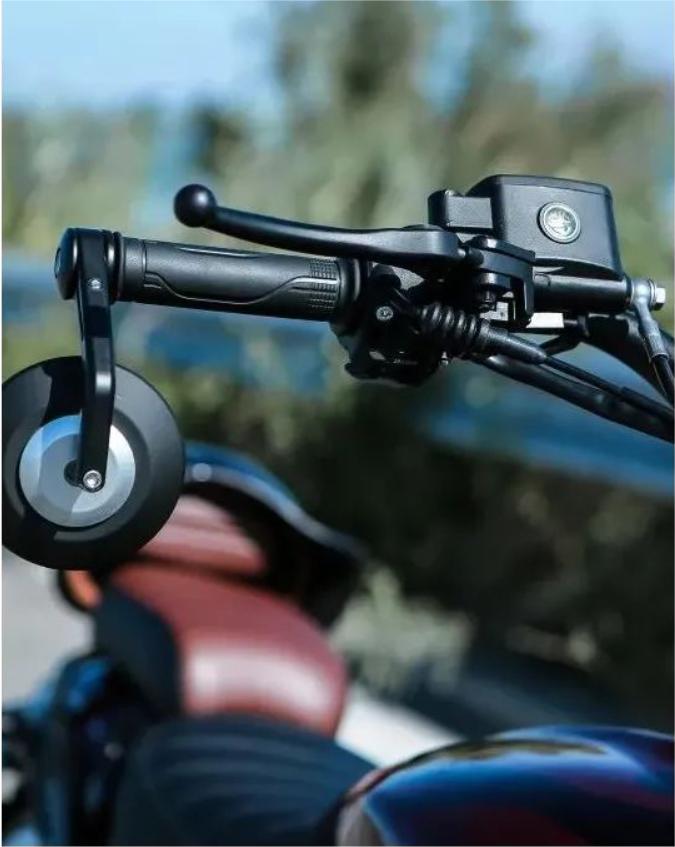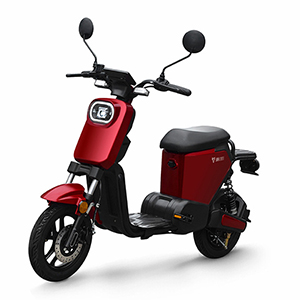Jonway Knowledge | Inventory the Causes of Motorcycle Malfunctions
Time : 2024/1/30 13:34:00
Nowadays, many people love riding motorcycles and will ride them to travel when they have free time. However, if the motorcycle is driven for a long time, it is easy to encounter some minor malfunctions.
Many motorcycle enthusiasts are gradually starting to repair themselves. Below is a list of common motorcycle malfunctions, along with some small repair tips~
1. The overflow pipe of the oil cooler drips oil outward

Fault phenomenon: After the engine is turned off and stopped, the carburetor overflow pipe drips oil outward. Check the oil drain screw below the float chamber, tighten it well, loosen the oil drain screw to drain the fuel inside the float, and then tighten the oil drain screw. After a few minutes, the overflow pipe drips oil again.
Cause analysis: During the road test, it was found that the engine was not easy to start during the first start, and there were symptoms of excessive mixture after starting. However, the vehicle was driving well, and when the engine was immediately restarted after the engine was turned off, it was easy to start. After starting, the excessive mixture disappeared, and the car stopped to rest. When the carburetor overflow pipe dripped oil, the engine was started for testing, and the engine was not easy to start. After starting, there were symptoms of excessive mixture, After knocking the throttle a few times, the phenomenon of excessive mixture disappears. Based on the phenomenon of the car, it is determined that the height of the carburetor float is not suitable for the height of the main oil needle, and the triangular oil needle and needle valve seat in the float chamber are not tightly closed.
When the engine is turned off, fuel accumulates in the float chamber and leaks from the overflow pipe when the oil level reaches a certain height. At this point, when starting the engine, due to the high oil level and rich mixture in the float chamber, it is difficult to start the engine. After starting, there is a phenomenon of rich mixture. As the engine works, the oil level in the float chamber decreases, and the phenomenon of rich mixture disappears on its own. As the oil level in the float chamber is basically constant during vehicle driving, the impact of the triangular oil needle and needle valve seat not being tightly closed on vehicle driving is not significant.
Troubleshooting method: Eliminate the accumulation of scale on the conical surface of the triangular oil needle in the float chamber, clean the carburetor, reinstall the disassembled parts, eliminate the phenomenon of oil dripping from the overflow pipe, start the engine well, and troubleshoot.
2. Sudden weakness during driving

Cause analysis: Insufficient vehicle power, involving multiple factors. According to the standard driving schedule of only 2000km, there should be no problems with the piston and piston rings. Moreover, the owner claims to strictly follow the rules of the running in period when driving. The application user repeatedly requests for replacement work.
During the replacement process, it was learned from conversations with the user that before the malfunction occurred, 1 liter of oil was added to the gear transmission. At this point, we finally understand the cause of the malfunction.
The standard for filling the transmission gear of this car should be 450ml of gear oil, and the user mixed 900ml of engine oil on top of 450ml of gear oil, which increased the internal running resistance of the transmission box and consumed power.
Troubleshooting method: Drain all the mixed oil in the transmission gear and gearbox, clean with gasoline, and refill 450ml of gear oil. Start the engine for a test drive, the power and acceleration performance have returned to normal, and the fault has been eliminated.
3. There is a "cracking" sound after the engine starts

Phenomenon and analysis: After starting the engine, there is a "cracking" noise, which increases with the increase of speed. At the same time, the horn sound is small and the headlights are not on. When starting the engine for inspection, it was found that there is a "cracking" sound of metal friction, which is clearly from the end of the magneto.
It is estimated that the loosening of the fixing screws on the stator disk or the loosening of the fixing screws on the coil may cause displacement of the fixing components and friction with the rotor. After removing the cover of the magneto and the rotor, it was found that the outer enamel wire of the lighting coil was damaged. At the same time, only one fixing screw of the coil was in place and also loose. The other half, which had a head after being squeezed, was lost, and the remaining half was squeezed into the joint gap between the two sets of magnets on the rotor.
Solution: Replace the lighting coil and fixing screws, remove iron filings, reassemble, start the engine, eliminate noise, restore the charging circuit and lighting system to normal, and troubleshoot.
4. Weak driving and black smoke coming from the exhaust pipe

Fault phenomenon: Weak driving, black smoke coming from the exhaust pipe
Fault analysis and troubleshooting: First, remove the air filter, start the engine, and the fault still persists. Clean the carburetor, check that the automatic enrichment valve is working properly, and reinstall and test run the fault without improvement. Check the compression pressure and find that it is very small. After draining the water, remove the cylinder head and inspect it. It is found that the piston ring is severely worn and the valve is severely leaking. Replace the piston ring, repair the valve, and then install it for trial use. The engine is easy to start, The phenomenon of black smoke disappears, but when the engine is turned off, there is a "click" sound in the engine and it starts again.
The vehicle made a rhythmic "click click" sound, indicating signs of starting but unable to start. Carefully listening for the sound coming from the generator side, removing the water and oil pipes, opening the side cover, and dismantling the rotor nut, it was found that the tightening force of the nut was insufficient and only a small force was used to unscrew it. After removing the rotor, it was found that the semicircle key had been cut flat, and the keyway between the crankshaft and rotor was severely damaged. At the same time, the large gear of the overrunning clutch was also stuck, Forcefully driving down the large gear may be due to the support being overturned, causing the large gear of the overrunning clutch to jam.
Analysis suggests that after replacing the new ring and eliminating the valve leakage fault, the engine compression force increased, causing the gas explosion force borne by the crankshaft connecting rod to be greater than before the fault, cutting off the originally damaged key. The crankshaft was removed, and a new keyway was re milled on the opposite side of the original keyway between the rotor and crankshaft. A semi-circular key was assembled with a heavy-duty vehicle, and the owner was very satisfied after a test drive.
5. Engine refueling and stalling

Fault phenomenon: After starting the engine, when idling or slightly increasing the throttle, preheating for 1-2 seconds, there is a phenomenon of refueling and stalling, or the engine speed not only does not increase but also decreases after refueling. At the beginning of driving, the speed is very slow and can only gradually increase after the vehicle has traveled a long distance (ranging from 500 to 1000 meters).
Cause analysis: There is a phenomenon of refueling and stalling after preheating, or the engine speed not only fails to increase but also decreases after refueling. At the beginning of driving, the speed is very slow and can only gradually increase after the vehicle has traveled a long distance (ranging from 500 to 1000 meters). This indicates that there is a problem with the carburetor, causing the mixture to be too thin.
Exclusion method: Use a fine needle or steel wire to clear the total speed measuring hole and main measuring hole of the concentrated oil circuit. Raise the oil level of the carburetor appropriately. Adjust the carburetor air-fuel ratio screw until it is suitable. Finally, lower the carburetor valve needle locking plate down one to two compartments. Finally, add a few drops of lubricating oil onto the air filter mesh. After the adjustment is completed, a road test is carried out, everything is normal, and the fault is resolved.
6. When the engine is hot, the idle speed is too high

Fault phenomenon: A motorcycle started normally when cold, and after starting, the idle speed, low, medium, and high speeds were all normal. After riding for more than ten minutes or more, the throttle was returned, and the engine idle speed was nearly 3000r/min. According to user feedback, the carburetor of the motorcycle was adjusted multiple times but did not improve, and a new carburetor was replaced, but the problem has not been eliminated.
Fault analysis and troubleshooting: The increase in total engine speed when the engine is hot is generally caused by the adjustment of the idle mixture being too lean or the automatic side starter not being fully turned off. So first adjust the carburetor, the fault still persists, and then change the side starter to 12V DC power supply, and the fault phenomenon disappears.
Using a multimeter to measure the voltage of the side starter, it is around 3V during idle operation. After acceleration, the voltage approaches zero. Therefore, it can be seen that the automatic side starter is not tightly closed, which is the cause of this fault. The reason for the side starter not being tightly closed is due to the low power supply voltage during acceleration, and the reason for the low voltage is often caused by damage to the voltage regulator. After replacing the rectifier voltage regulator with a new one, measure the voltage of the automatic side starter. The voltage is around 4V under various working conditions, and the fault is resolved.











